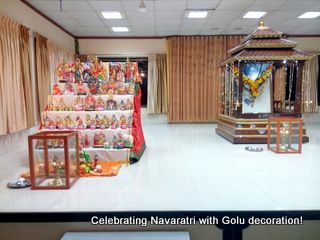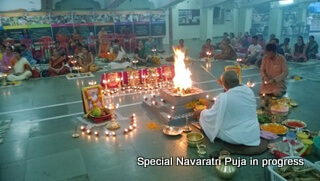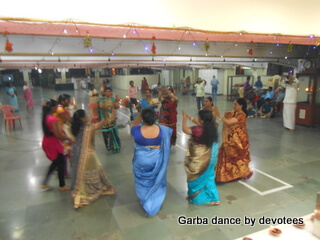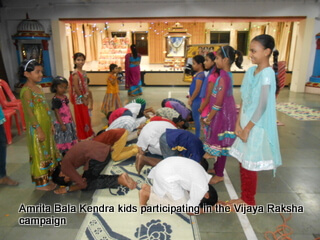
The nine-day festival of Navaratri, culminating on the day of Dussehra or Vijaya Dashami, was celebrated in a traditional ambience at the Mumbai Ashram. Beginning on Tuesday, 13th October, the festivities included installing a shrine showcasing a collection of ‘Golu’ dolls, arranged in a symmetrical manner, depicting the myriad forms of creation.

The Ganapati Homam was performed in the morning on all nine days. Special pujas were performed in the evenings, invoking the various forms of the Divine Mother Durga. These included the Bhagavati Puja, Durga Puja, Kali Puja, Navagraha Puja, Vidya Puja, Vidya Homam, Maha Sudarshana Homam, Mahamrityunjaya Homam and Shiva Shakti Homam. All the pujas were well-attended by devotees from across the city. The pujas were accompanied by appropriate chants and bhajans, concluding with the Maha Arati.

A highlight of the celebration was the Garba dance (a traditional Gujarati folkdance form), performed by some women devotees, to the beats of Gujarati songs. Another important feature was incorporating the Vijaya Raksha campaign into the festival. An initiative of Amrita University, Bengaluru campus, the ritual includes men tying a red thread around women’s wrists, and touching their feet, as a mark of respect and reverence for womanhood. The campaign found resonance in the Mumbai Ashram too, where young members of the Amrita Bala Kendra participated in the ritual. The Vijaya Raksha ritual was also observed by devotees in the village of Ransai that has been adopted under the AMRITA SeRVe initiative.

On the final day of celebration, the Saraswati Puja was performed, followed by the Vidyarambha ceremony, wherein young children were initiated into the alphabet.